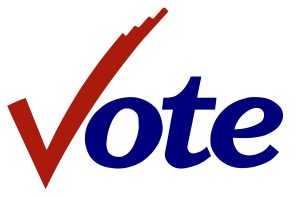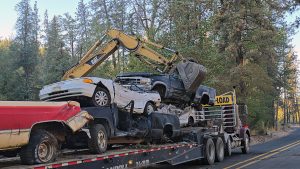By Brian Bull/Opinion for Underscore
For more than a century, “The Pioneer” stood tall on his pedestal on the University of Oregon campus in Eugene. With his bushy beard, boots, and buckskin, he struck many Oregonians as the embodiment of frontier courage and determination, representative of settlers who traveled thousands of miles to tame the Wild West and build a new life for themselves.
On the day the statue was dedicated in 1919, residents and local officials preached white supremacy. “The Anglo-Saxon race is a branch of the Teutonic race,” declared Frederick V. Holman, President of the Oregon Historical Society. “It was and is a liberty-loving race. … This race has large powers of assimilation, and it’s great ideas of liberty and of the rights of mankind caused other races to become a part of it, so it became a people as well as a race.”
“The Pioneer” went on a different journey last month, when a group of unidentified protesters lashed ropes around the statue, pulled it onto the ground, and dragged it across the street and onto the steps of the university’s administration building. Bystanders say some struck the statue with pickaxes and crowbars. A companion sculpture, “The Pioneer Mother,” was also toppled the same day.
On a recent Friday evening, Jacob Billy Sr. stared at the empty space where “The Pioneer” once stood. “I was just wondering why it took this long, really,” said Billy, a member of the Yakama Nation with a newly minted Ph.D in education. “These two statues that came down—people have wanted them removed for a long time.”

Although monuments and statues like “The Pioneer” and “The Pioneer Mother” symbolize Old West values of perseverance and independence, to Billy and countless Native Americans they symbolize the displacement of the land’s original inhabitants, who were then demonized by the white authors of history.
“The Kalapuya were here,” said Billy, gesturing toward the rest of the university campus. Historians believe the Kalapuya Indians once numbered close to 15,000. But by 1849, after several epidemics brought on by contact with traders and settlers, that number fell to an estimated 600 people. Imagine, said Billy, that you were living in your home, but then “someone comes up and says, ‘I like your house and the stuff in it. Get out!’ That’s basically what happened.”
Injustice in Common
For years, students, alumni, and other community members have implored the University of Oregon to remove the statues. Minutes before its sudden removal in June, a group called Black Indigenous People of Color (BIPOC), Liberation Collective, held a teach-in about the university’s racist past. Deady Hall, for instance, was named for a pro-slavery university founding member. In June, the university announced it will be changing the building’s name, due to community pressure and the broader impact of the Black Lives Matter movement.
“Our histories are very intimately tied,” said Charise Cheney, an associate professor of Indigenous, Race, and Ethnic Studies at the university. “The connections that people are making between white supremacy and anti-Blackness on the one hand, and white settler colonialism on the other hand, has been a breakthrough moment in American history.”

When protests began across Eugene in late May, Cheney, a Black woman in a predominantly white city, was nervous. But having allies from the white and Native American communities provided her a feeling of support that she had never felt during her 11 years living in Eugene. “It really hearkens back to the Civil Rights and Black Power movements of the 60s and 70s,” she said.
Long before this summer of protest, Black and Native American activists have supported each other’s efforts to reexamine the white-centric, widespread, and woefully inaccurate history of this country, while also urging American society as a whole to recognize systemic racism and inequality—and to do something about them. Toppling statues of Christopher Columbus, Confederate soldiers, “The Pioneer”—they are all part of a legacy of oppression, displacement, and slavery. “I think that Indigenous communities have always been struggling, against the use of mascots, and the destruction of sacred sites,” said Cheney. “But their numbers are so much smaller than other communities of color. I think that the broadening awareness of racism and white supremacy in the U.S. has helped to buoy Indigenous protesting.”
A recent event held in Eugene, dubbed Indigenous Solidarity with Black Liberation, drew about 150 people to Owen Rose Garden. Flanked by a tall tipi, presenters spoke of a shared history of oppression, slavery, mistrust of the justice system, and cultural stereotypes. “The Black community stood with us during Standing Rock,” said Violet Johnson, a University of Oregon student and Hupa Valley Indian of Yurok descent. “And we’re with them now for the Black Lives Matter movement.”

Indigenous issues are also becoming more prominent, as Black activism surges across the U.S. “The U.S. is a capitalist country, one of the wealthiest,” said Johnson. “But that wealth didn’t come arbitrarily. It was built with stolen labor and stolen land.” These dual injustices connect Black and Native Americans.
As the Black Lives Matter movement works to spotlight police brutality and systemic racism in the U.S. justice system, Native Americans are capitalizing on this moment to spotlight injustices such as the 1978 Supreme Court ruling in Oliphant v. Suquamish Indian Tribe. The decision rendered tribal courts without jurisdiction over non-Native Americans. (It took 35 years before the Violence Against Women Reauthorization Act allowed tribes to take such non-Native American offenders to court for domestic violence against Native American women.)
Oliphant v. Suquamish had “huge ramifications on tribes’ abilities to protect themselves from non-Natives who committed crimes on our territories,” said Johnson. Of particular concern to Johnson and many other activists is the tragedy of missing or murdered Native American women. According to the National Crime Information Center, more than 5,700 Native American women and girls were reported missing in 2016, while the U.S. Department of Justice says that on some reservations they experience murder rates 10 times higher than the national average. Johnson hopes justice reform could overturn the law altogether, allowing tribal police to arrest and convict non-Native Americans.

Meanwhile, Johnson feels it’s critical for Black and Native American activists to continue supporting each other to maintain momentum. She believes this is true whether the subject is renaming a professional sports team, a push for new models of policing, campaigns for the removal of statues, or protests to expose systemic racism.
Billy, who will be a science teacher on the Warm Springs Indian Reservation later this year, looked at the site where “The Pioneer” once stood and thought about this current political moment. It will take more effort, he said. “It’s like making a snowball and pushing it down a hill.” Everyone has to keep adding to it and adding to it before it will finally roll.
As for his connection to Black Americans and the Black Lives Matter movement generally, he says the sense of solidarity is almost overwhelming: “In my language,” Billy said, “there’s no word for ‘I.’ It’s specifically ‘Us.’ People who are akin to us, who are [fellow] human beings, are that important. That for them to suffer is for me to suffer.”
___
Brian Bull is a reporter with KLCC in Eugene, Ore., and a member of the Nez Perce Tribe.
Underscore.news is a nonprofit journalism organization based in Portland, Oregon. Supported by foundations, corporate sponsors, and the public, our reporting focuses on underrepresented voices and in-depth investigations.



